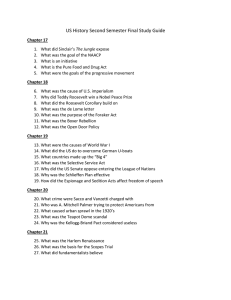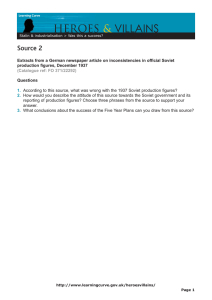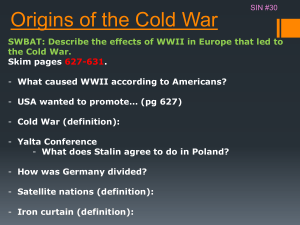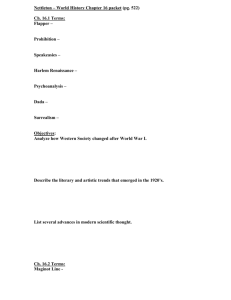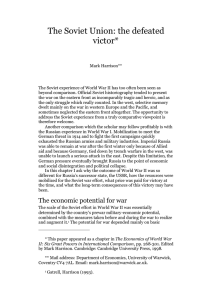war economy*
advertisement
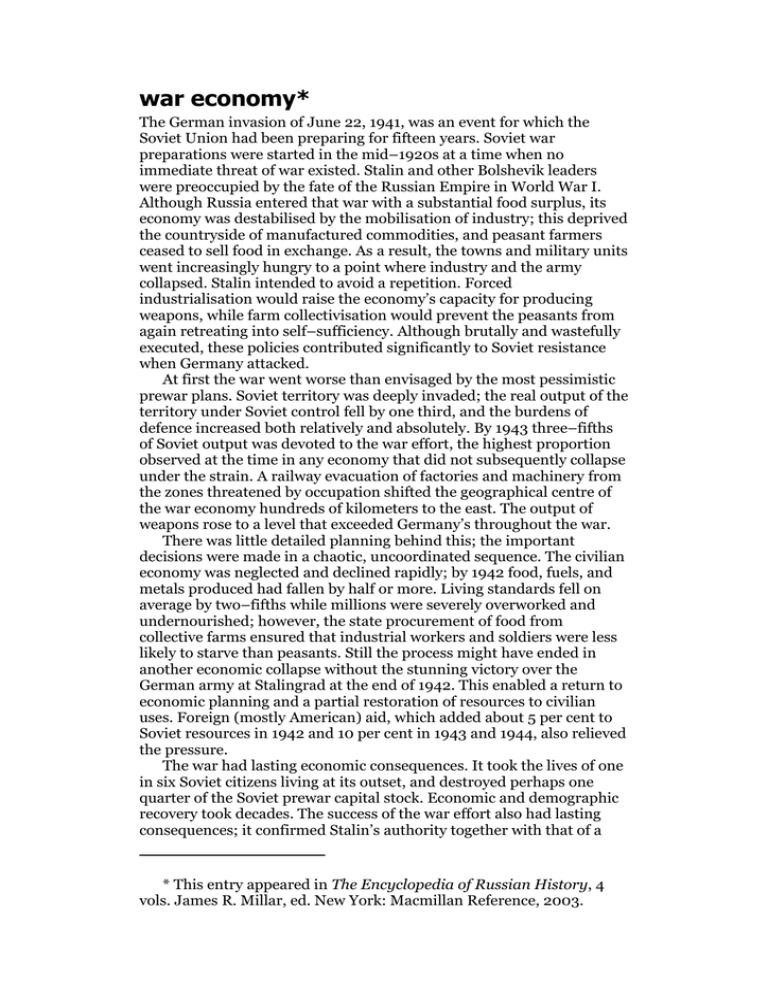
war economy* The German invasion of June 22, 1941, was an event for which the Soviet Union had been preparing for fifteen years. Soviet war preparations were started in the mid–1920s at a time when no immediate threat of war existed. Stalin and other Bolshevik leaders were preoccupied by the fate of the Russian Empire in World War I. Although Russia entered that war with a substantial food surplus, its economy was destabilised by the mobilisation of industry; this deprived the countryside of manufactured commodities, and peasant farmers ceased to sell food in exchange. As a result, the towns and military units went increasingly hungry to a point where industry and the army collapsed. Stalin intended to avoid a repetition. Forced industrialisation would raise the economy’s capacity for producing weapons, while farm collectivisation would prevent the peasants from again retreating into self–sufficiency. Although brutally and wastefully executed, these policies contributed significantly to Soviet resistance when Germany attacked. At first the war went worse than envisaged by the most pessimistic prewar plans. Soviet territory was deeply invaded; the real output of the territory under Soviet control fell by one third, and the burdens of defence increased both relatively and absolutely. By 1943 three–fifths of Soviet output was devoted to the war effort, the highest proportion observed at the time in any economy that did not subsequently collapse under the strain. A railway evacuation of factories and machinery from the zones threatened by occupation shifted the geographical centre of the war economy hundreds of kilometers to the east. The output of weapons rose to a level that exceeded Germany’s throughout the war. There was little detailed planning behind this; the important decisions were made in a chaotic, uncoordinated sequence. The civilian economy was neglected and declined rapidly; by 1942 food, fuels, and metals produced had fallen by half or more. Living standards fell on average by two–fifths while millions were severely overworked and undernourished; however, the state procurement of food from collective farms ensured that industrial workers and soldiers were less likely to starve than peasants. Still the process might have ended in another economic collapse without the stunning victory over the German army at Stalingrad at the end of 1942. This enabled a return to economic planning and a partial restoration of resources to civilian uses. Foreign (mostly American) aid, which added about 5 per cent to Soviet resources in 1942 and 10 per cent in 1943 and 1944, also relieved the pressure. The war had lasting economic consequences. It took the lives of one in six Soviet citizens living at its outset, and destroyed perhaps one quarter of the Soviet prewar capital stock. Economic and demographic recovery took decades. The success of the war effort also had lasting consequences; it confirmed Stalin’s authority together with that of a * This entry appeared in The Encyclopedia of Russian History, 4 vols. James R. Millar, ed. New York: Macmillan Reference, 2003. 2 new generation of wartime industrial and political managers who survived him and remained in power for thirty more years. These used the success of the war economy to discourage critical thinking about basic economic policies and institutions; for example Stalin claimed that the war showed the Soviet system to be better than capitalism for organising economic life in both wartime and peacetime. Related topics Collectivisation Economic planning Stalin World War I World War II References Barber, John, and Mark Harrison. (1991). The Soviet Home Front: a Social and Economic History of the USSR, 1941–1945. London: Longman Harrison, Mark. (1996). Accounting for War: Soviet Production, Employment, and the Defence Burden, 1940–1945. Cambridge (England): Cambridge University Press Harrison Mark, ed. (1998). The Economics of World War II: Six Great Powers in International Comparison. Cambridge (England): Cambridge University Press: Samuelson, Lennart. (2000). Plans for Stalin's War Machine: Tukhachevskii and Military–Economic Planning, 1925–1941. London and Basingstoke: Macmillan Simonov, N.S. (1996). “‘Strengthen the Defence of the Land of the Soviets’: the 1927 ‘War Alarm’ and its Consequences”. Europe–Asia Studies, 48(8), 1355–64; MARK HARRISON Department of Economics University of Warwick Coventry CV4 7AL mark.harrison@warwick.ac.uk





